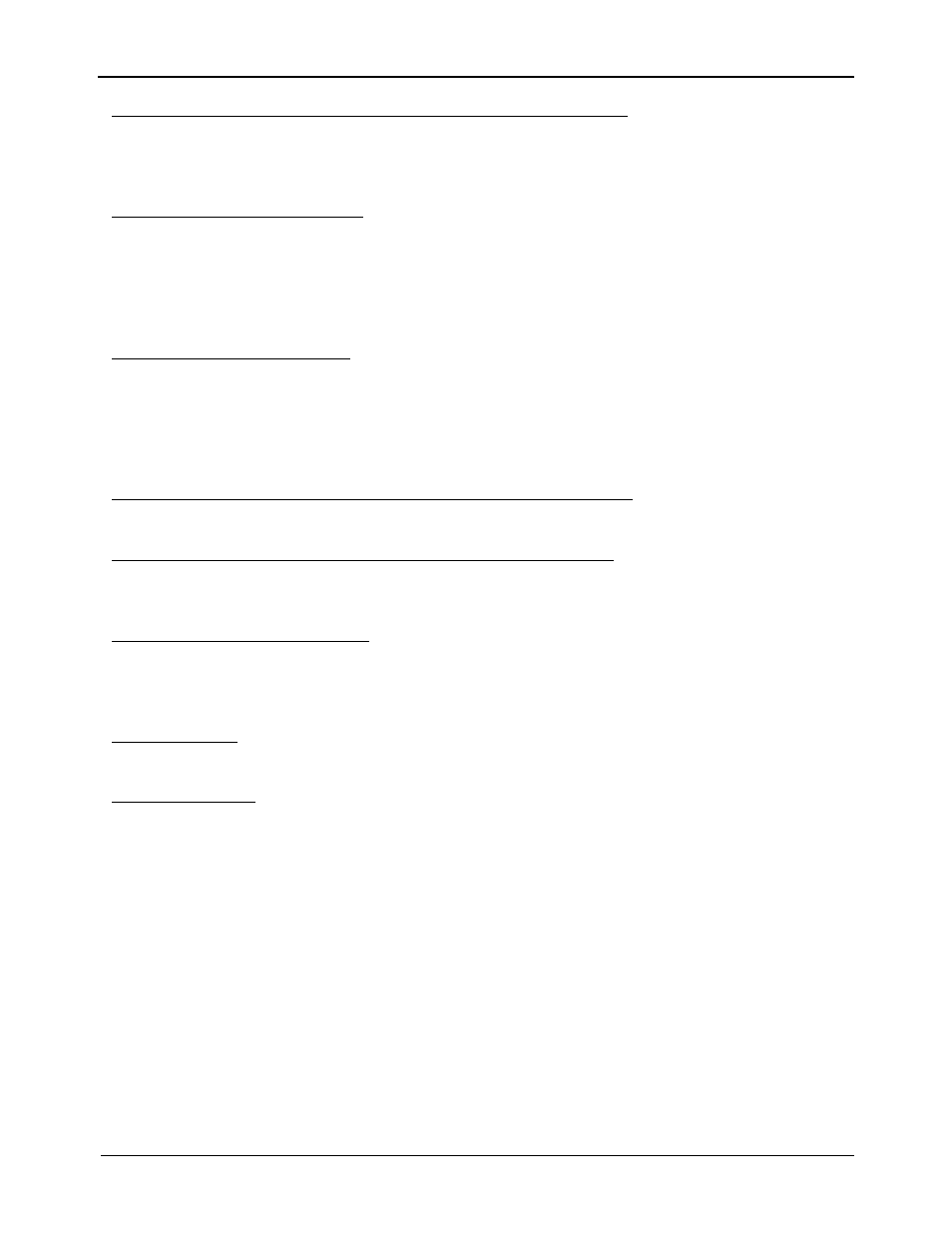Microcom 466 User Manual
Page 70

Bar Codes
Chapter 8
466 Operators Manual
64
Universal Product Code - Version E (UPC-E, send 7 digits), TCI=14
TCI 14 is the same as TCI 13 except that only the actual 7 numeric digits are used to produce
the bar code. (Caution: It is very important that the valid 7 digits are used. Failure to use valid
numbers may result in incorrect bar codes.)
Interleaved 2 of 5 TCI=15 (I2of5)
I2of5 is a high density, variable length, numeric bar code that is used mainly in the distribution
industry. Although the data can be any length, there must always be an even number of
characters. If an odd amount of characters is required, a 0 is normally padded at the
beginning. I2of5 bar codes actually encode characters in the spaces as well as the bars.
Therefore the character spacing element (CS) must be defaulted.
Code 3 of 9 (Code 39), TCI=16
Code 39 is one of the more popular variable length, alphanumeric, bar code in use today. It
can encode numeric characters 0 through 9, all upper case letters, and the characters -.*$/+%
and space. Although most specifications require a specific inter character spacing, Code 39
will allow custom inter character spacing as long as the maximum does not exceed the timeout
zone of the intended scanning equipment.
European Article Numbering System - Version 13 (EAN-13), TCI=20
EAN-13 contains 13 digits and is constructed in the same manner as UPC-A.
European Article Numbering System - Version 8 (EAN-8), TCI=21
EAN-8 contains 8 numeric digits. Please note that EAN-8 does not use compression and is not
a condensed version of EAN-13 (as with UPC-A and UPC-E).
Modified Plessey (MSI 1), TCI=24
MSI is primarily used on retail self labels. It is a low density and numeric only bar code due to
the amount of space that each character consumes. MSI 2 and MSI 3 are variations which
contain 1 or 2 check digits respectively.
Postnet, TCI=36
Postnet is a numeric only bar code that is used in postal applications to sort mail.
MaxiCode, TCI=38
Modes 2 through 6 of the AIM International MaxiCode specification are supported. Modes 0
and 1 are obsolete, and are not supported.
The format field to describe a MaxiCode label field shall have a TCI of 38 and a CGN with the
desired Mode (2-6).
MaxiCode may encode non-printable characters, and Modes 2 and 3 require certain control
characters for compatibility with transport industry standards. In order to specify a control
character in a MaxiCode data string without causing printer difficulties, use the pound symbol
('#') followed by two hexadecimal digits that give the value of the control character. For
example, "#01" specifies Control-A (ASCII SOH) and "#1D" specifies Control-] (ASCII GS). In
order to specify an actual pound symbol in the string, use "##". The following table shows all
the "#" equivalents that may be used.